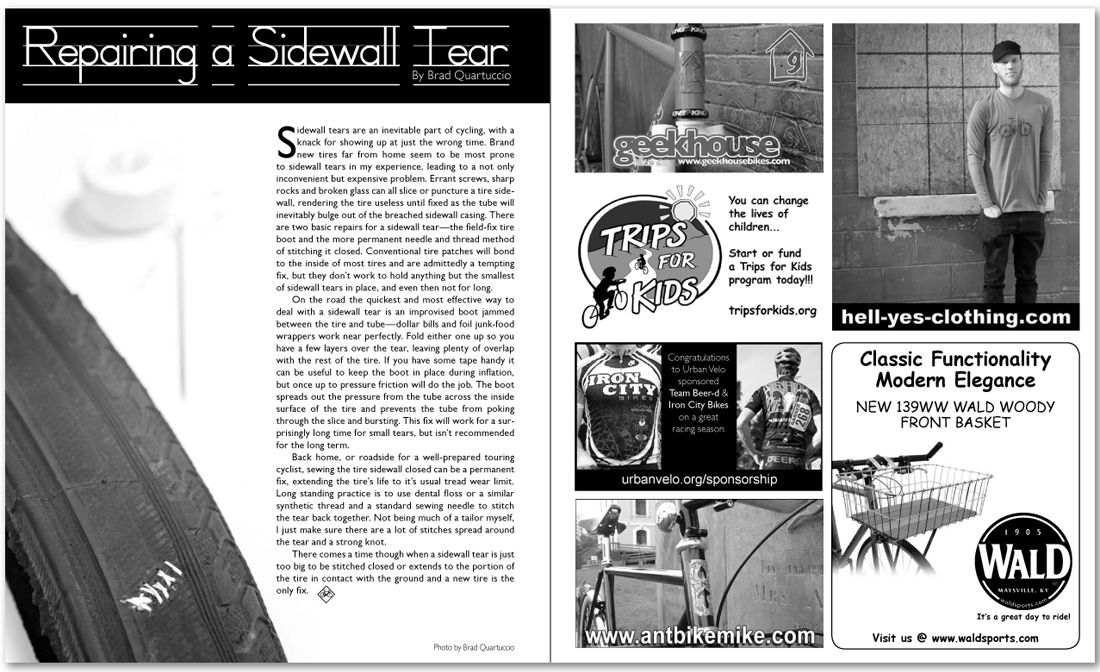

|
|||
Repairing a Sidewall TearBy Brad Quartuccio Sidewall tears are an inevitable part of cycling, with a knack for showing up at just the wrong time. Brand new tires far from home seem to be most prone to sidewall tears in my experience, leading to a not only inconvenient but expensive problem. Errant screws, sharp rocks and broken glass can all slice or puncture a tire sidewall, rendering the tire useless until fixed as the tube will inevitably bulge out of the breached sidewall casing. There are two basic repairs for a sidewall tear—the field-fix tire boot and the more permanent needle and thread method of stitching it closed. Conventional tire patches will bond to the inside of most tires and are admittedly a tempting fix, but they don’t work to hold anything but the smallest of sidewall tears in place, and even then not for long. On the road the quickest and most effective way to deal with a sidewall tear is an improvised boot jammed between the tire and tube—dollar bills and foil junk-food wrappers work near perfectly. Fold either one up so you have a few layers over the tear, leaving plenty of overlap with the rest of the tire. If you have some tape handy it can be useful to keep the boot in place during inflation, but once up to pressure friction will do the job. The boot spreads out the pressure from the tube across the inside surface of the tire and prevents the tube from poking through the slice and bursting. This fix will work for a surprisingly long time for small tears, but isn’t recommended for the long term. Back home, or roadside for a well-prepared touring cyclist, sewing the tire sidewall closed can be a permanent fix, extending the tire’s life to it’s usual tread wear limit. Long standing practice is to use dental floss or a similar synthetic thread and a standard sewing needle to stitch the tear back together. Not being much of a tailor myself, I just make sure there are a lot of stitches spread around the tear and a strong knot. There comes a time though when a sidewall tear is just too big to be stitched closed or extends to the portion of the tire in contact with the ground and a new tire is the only fix.
|
|
|